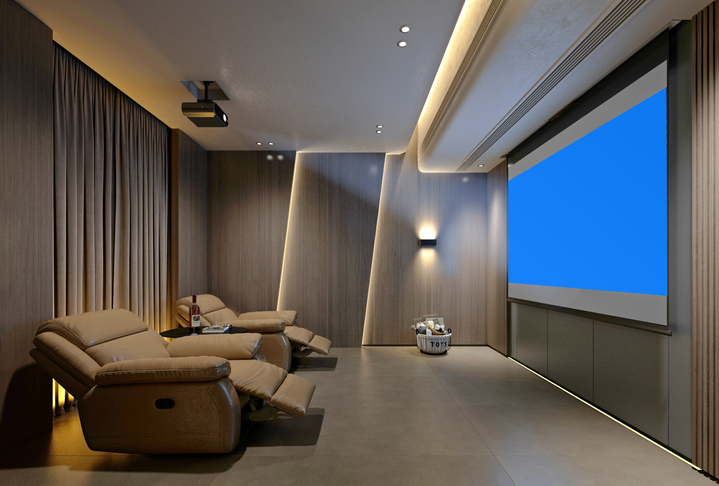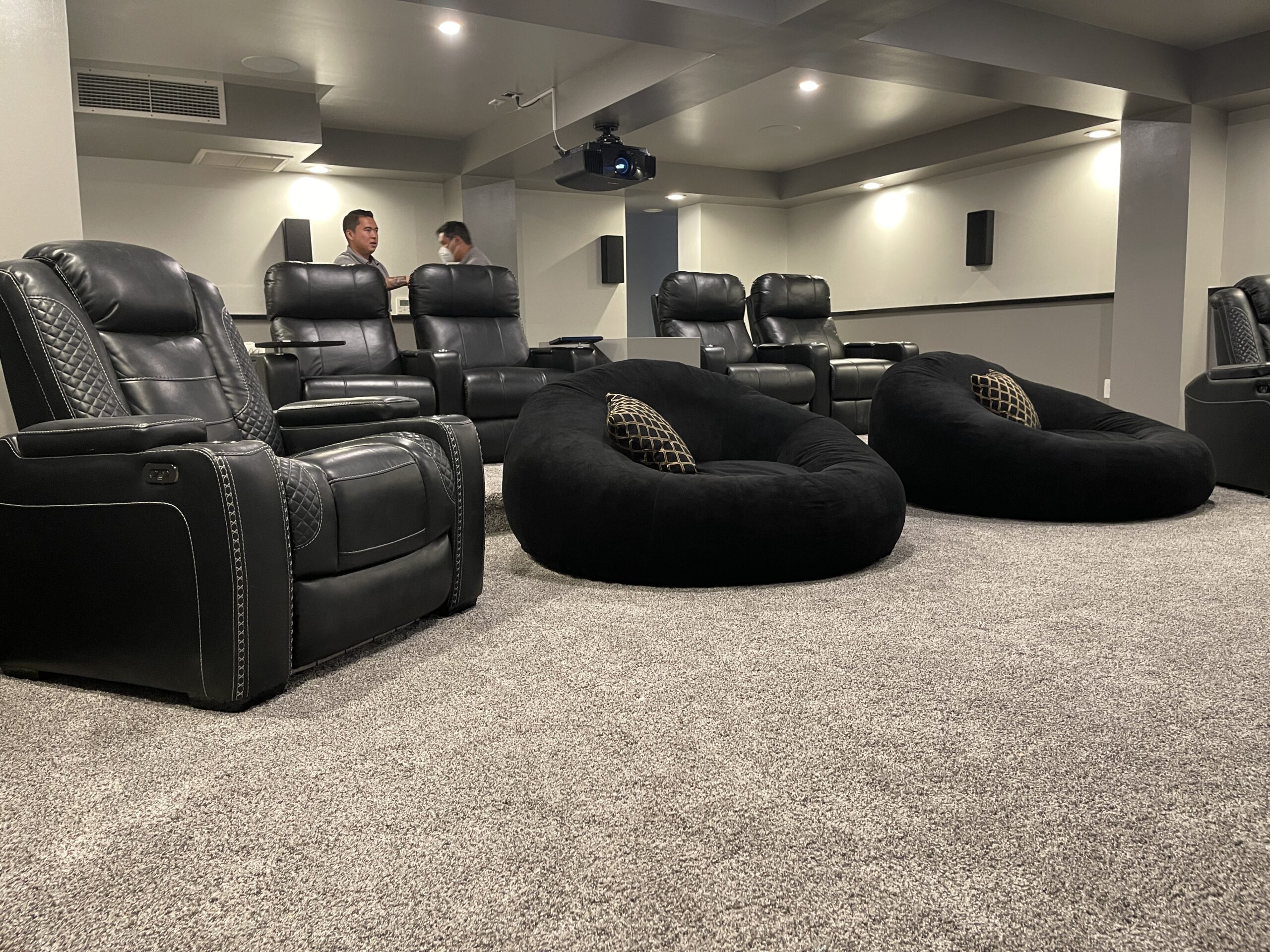Innovative Home Theater Tampa Ideas for the Contemporary Home
Innovative Home Theater Tampa Ideas for the Contemporary Home
Blog Article
Home Theater 101: Everything You Required to Know for a Motion Picture Experience at Home
Developing a home theater that matches the cinematic experience of an industrial theatre entails mindful consideration of multiple elements, including screen option, sound systems, and room layout. Whether you are considering the optimal display size or the details of surround sound, understanding these basics is crucial.
Choosing the Right Screen
When setting up a home movie theater, choosing the ideal screen can make or damage the seeing experience - tampa home theater. The display acts as the focal point of your arrangement, affecting image quality, seeing angles, and general aesthetic. Key elements to think about include display dimension, resolution, and kind
Initially, figure out the appropriate screen dimension based upon your area dimensions and seating distance. A general standard is to sit about 1.5 to 2.5 times the diagonal display size for optimum watching. Next off, pick between various screen types, such as fixed-frame, mechanized, or retractable screens, each offering distinct benefits. Fixed-frame displays commonly offer the very best image quality, while motorized options allow for versatility in room usage.
Resolution is one more crucial element. For a genuinely immersive experience, consider a display developed for 4K and even 8K content, making sure sharpness and clearness. In addition, consider the display's gain, which influences brightness and comparison; a higher gain can enhance illumination in well-lit rooms, while a lower gain may be a lot more appropriate for darker environments.
Selecting Sound Equipment
Audio devices is a vital element of any kind of home theater system, considerably enhancing the general watching experience. The selection of audio equipment can identify the depth, clearness, and immersion of audio, crucial for developing a motion picture environment.
When picking audio equipment, take into consideration a surround stereo, which typically consists of a receiver, multiple speakers, and a subwoofer. A 5.1 or 7.1 channel system is suggested, where the first number stands for the audio speakers and the 2nd the subwoofer, giving an immersive soundscape. The receiver is the heart of the system, managing sound and video signals, and ought to support modern styles like Dolby Atmos for a boosted spatial experience.
Quality audio speakers are important; search for designs that offer a balanced noise account with good bass response. Floor-standing audio speakers can produce richer sound, while shelf alternatives conserve area. Additionally, take into consideration wireless alternatives for simplicity of installment, although wired systems frequently deliver superior efficiency.

Ideal Seating Plans
Developing a suitable home movie theater experience hinges significantly on ideal seating plans. The arrangement of seats plays an important duty in both comfort and watching top quality, directly influencing the overall cinematic experience.
First, think about the display dimension and checking out distance. An usual standard is to position seats at a range approximately 1.5 to 2.5 times the angled dimension of the screen. This makes certain an immersive experience without straining the eyes.
Next, elevation is vital. The back rows need to be greater than the front to stay clear of obstructions if your seats is in a tiered layout. For flat seats, make sure that the front row is not too close to the display, which everyone has a clear view.
Moreover, consider the arrangement in terms of social dynamics. Group seating can improve the common experience, while individual seats might be preferred for personal viewing.

Lastly, focus on comfort with great post to read ergonomic seating that supports prolonged watching durations. Incorporating reclining chairs or supported seats can significantly boost the experience, making the home movie theater a preferred location for both entertainment and leisure.
Lighting and Atmosphere
Efficient lighting and setting are crucial elements of a well-designed home cinema, as they substantially affect the viewing experience. The best lighting can improve the cinematic feeling, while inadequate choices can take away from it. For optimum outcomes, take into consideration a split illumination method that includes ambient, job, and accent lighting.
Ambient lighting provides general lighting, ensuring that the space is not completely dark, which can strain the eyes. Dimmer switches are highly suggested, enabling modifications based upon the web content being watched. Job lights, such as wall surface sconces or flooring lights, supplies useful lighting for tasks like analysis or browsing the area without interrupting the general environment.
Accent illumination can be used to highlight architectural functions or produce focal factors, adding deepness and interest to the room. LED strip lights behind screens or along shelves can supply a subtle glow that enhances the aesthetic experience without frustrating the viewer.

Wiring and Installation Tips
A tactical electrical wiring configuration is important for attaining optimal performance in your home movie theater system. Appropriate circuitry not just makes certain high-grade audio and video clip signals yet likewise improves the total visual of your room. try this out Begin by drawing up your format, determining where each part will certainly be placed, including your screen, speakers, and receiver.
When selecting cables, focus on high-quality, appropriately determined wiring to minimize signal loss. HDMI cables need to be made use of for video links, while audio speaker wire should match the specifications of your audio speakers and amplifier. Go with in-wall ranked cable televisions to adhere to safety criteria and keep a clean appearance.

Final Thought
In summary, developing an outstanding home cinema experience calls for mindful consideration of different aspects, including screen selection, audio equipment, seating setups, illumination, and circuitry. Each element plays a crucial function in achieving optimum efficiency and setting, eventually enhancing the pleasure of home amusement. By focusing on these aspects, a motion picture environment can be effectively duplicated, permitting for immersive watching experiences that match Recommended Site conventional theater settings. Focus to detail in each area is vital for overall satisfaction.
Creating a home movie theater that equals the cinematic experience of a commercial theatre involves careful factor to consider of several elements, consisting of display selection, sound systems, and room layout.When establishing up a home movie theater, picking the best screen can make or damage the watching experience. Next off, choose in between various display types, such as fixed-frame, mechanized, or retracting screens, each offering distinctive benefits. For a truly immersive experience, think about a display developed for 4K or even 8K material, making certain intensity and clarity.In recap, creating an exceptional home movie theater experience requires cautious factor to consider of various elements, consisting of display option, audio tools, seating setups, illumination, and wiring.
Report this page